
Special Assignment
The Gravity of LCpl. Lance T. Graham
November 10, 2006

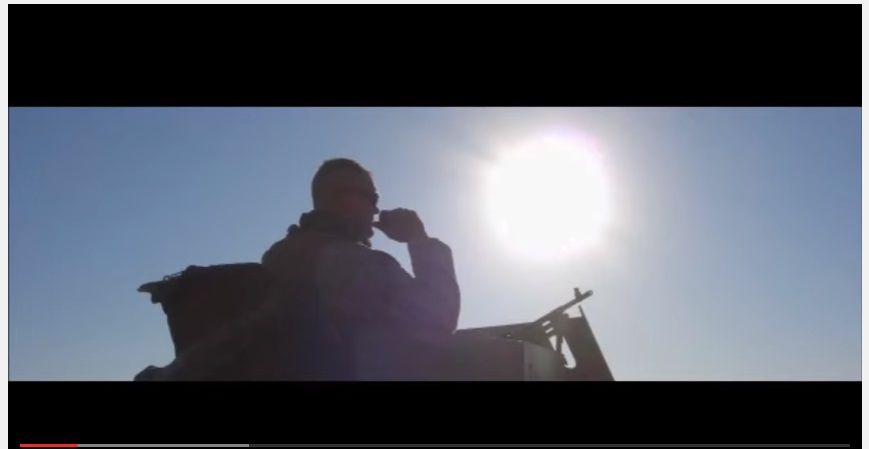
Photo courtesy Cpl. Mayer: “Picture of Lance up in the turret with a halo. I took that out on an observation post, Watkins was there.“
What Where When:
The Haditha Hospital Ambush
40 Life-Changing Minutes
20:30 May 7, 2005 Local time
“Earlier this month, violence peaked when insurgents detonated a suicide vehicle-borne bomb next to the Haditha Hospital. In the aftermath of the ensuing firefight, coalition forces discovered that the insurgents had physically taken over portions of the hospital and constructed bunkered fighting positions from which they engaged coalition forces. The insurgents caused major structural damage to the hospital, placing significant strain on health care in this region.”
-USMC.mil May 2005
“The insurgents came in and took over [the hospital],” said a doctor working there. “We didn’t want them here but they came anyway.”
-GlobalSecurity.org June 2005
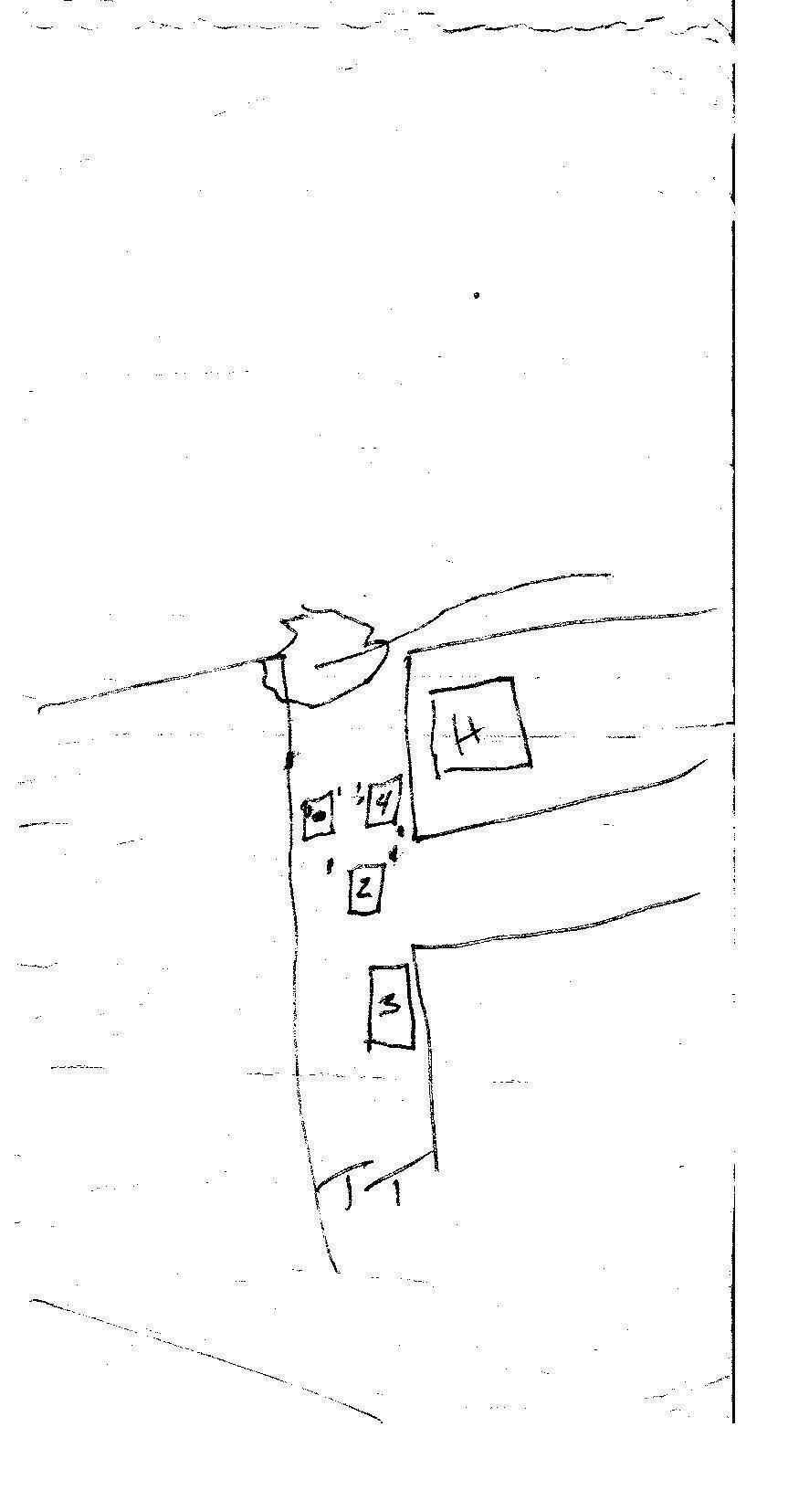
Platoon commander Sgt. Randall Watkins sets the stage:
‘We had just come off a 24 hour patrol on the east side of the Euphrates, the day prior, and that was supposed to be our down day, but a Civil Affairs mission into Haditha that morning kept us on alert. Then Kabar 1 hit a land mine and we had to go recover their downed vehicle. We only had hours before going back out on another 24 hour security mission to the east.
“Since it was the day before Mother’s Day, guys were all in an Internet room, trying to send E-Cards to their mothers – when Sgt Cepeda and I heard the mortars hit the dam. He rushed to get the platoon on the trucks and I went to get order from the COC.
“By the time I got on the trucks I heard that Kabar 1 was taking fire, that is the main reason we wanted to get out the gate so fast.
“Like 20-30 minutes had gone by since the mortars, so we were getting impatient. There was a little bit of confusion since mortars had never come from Haditha before, they always came from the open desert to the east of Haditha on the other side of the river.
“We were going to try to envelop around the insurgents that were firing at Kabar 1 from the city. Kabar 1 was on east side security already and they pushed to the river when the mortars hit, then they were taking fire from 7 military age males in black mandresses, but they couldn’t really fire back since the river blocked them, and there were innocent civilians in Haditha.
“That is when we finally pushed down with the two tanks.”
All hell broke loose as 3rd Battalion 25th Marines Mobile Assault Platoon 7 (16 Marines in six vehicles in this case) came upon the clustered Haditha hospital – but not before these Marines felt it in their hearts. LCpl. Stan Mayer said it was the worst feeling. Silence. Darkness. Not a soul around..
Sgt. Watkins’ response to passing the map mark where they were assigned to investigate firing was, “turn the bitch around,” as he put it. Doing so put the tanks at the rear of the convoy and LCpl. Lance Graham’s Humvee at the front.
“I know they would have come out a different alley” Watkins said meaning no matter where they were the driver would’ve found them. Those thoughts don’t comfort him though. The SVBIED (suicide vehicle borne improvised explosive device) aka a white van careened out of a alley and recoiled from a stone wall – in time to blast just behind “Victor One”; Graham and Mayer’s Humvee.
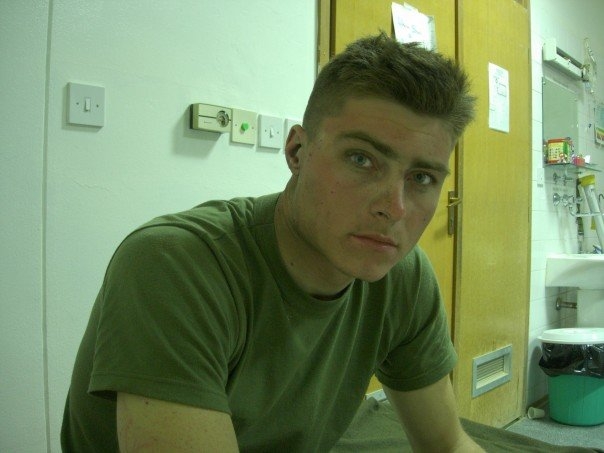
LCpl. Stan Mayer immediately after ambush
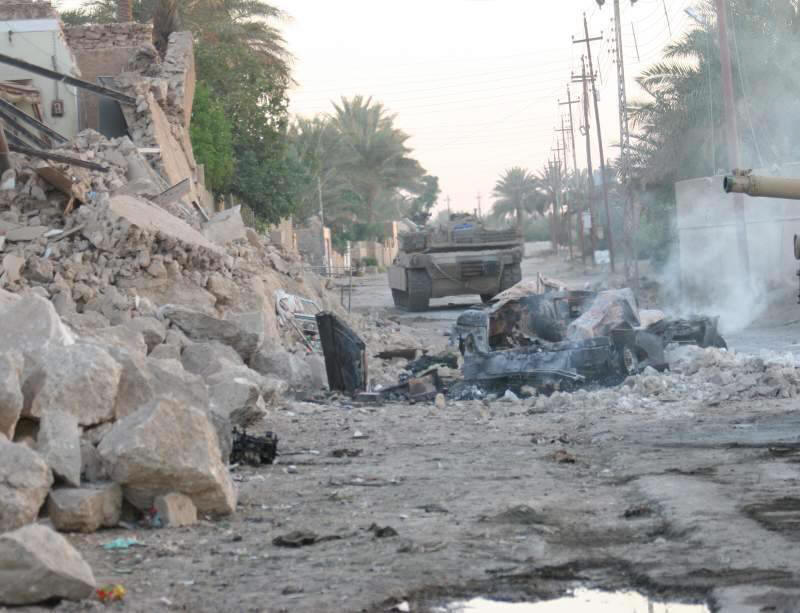
Victor 1 from the rear
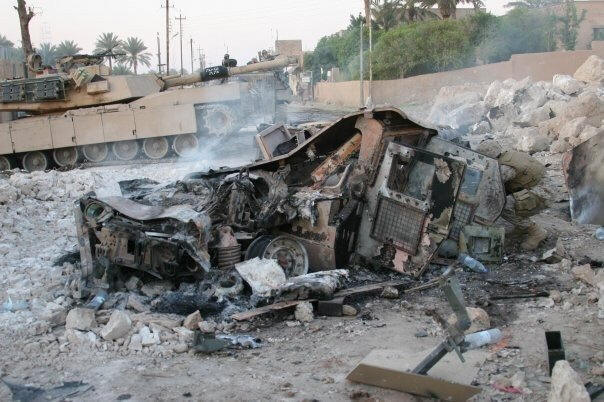
Victor 1 from the side
The turn-around required Marines get out of their vehicles to assist the drivers, a dismount. Narrow streets and huge vehicles need guided direction. When the bomb detonated Graham and his turret were blown more than 30 feet away. Three others, Sgt. Aaron Cepeda, Corpsman Jeffery Wiener and Sgt. Michael Marzano, who were on the ground also died as the blast from the van sent a fireball so high with so much shrapnel that they were killed instantly in the extreme blast.. Watkins and another Marine, SSgt. Priestly were critically wounded. Still others were seriously wounded.
Sgt. Aaron Cepeda

HM3 Jeffery Wiener
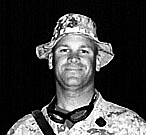
Sgt. Michael Marzano

|
“Weiner was up in the front providing security with all the other Marines, when most corpsman would have stayed in the truck where it is safe. Just one line to say his sacrifice, and giving his life without any fear of being hurt.” “Cepeda and Marzano were the sergeants and probably should have been coming to find me to find out the plan; they weren’t going to leave their Marines in the danger zone, they stood by them fighting instead of letting the lance corporals take the lead.” |
|
They brought control to catastrophe, then departed. Four of 16 dead. Two more critically wounded. Another five seriously wounded. That left five Marines to secure the wounded, load fallen Marines, get a vehicle running and fight like hell incoming rounds from all directions. LCpl. Jeff Schuller took over the only working machine gun as that gunner was wounded. God gave Schuller an “I’m invincible” attitude which most of the time annoys, but at this moment we see God’s wisdom. He fired for the balance of the ambush without stopping – or getting wounded. LCpl. Stan Mayer and LCpl. Emanuel Fellousis were unexplainably spared from Graham’s Humvee, injured but spared . Ammo in the Humvee cooked off, creating a series of explosions barring anyone from retrieving Graham. As LCpl. Todd Corbin drove the only barely working vehicle out loaded with everyone but Graham, a mortal etching occurred in the hearts of Schuller, LCpl. Zane Childress and especially Mayer – who had all screamed at Corbin to stop. Two tanks guarded Graham’s body for the 60 to 90 seconds before SSgt. Brady, MAP 9, a makeshift rifle platoon called “Team America” and plenty of brass arrived. It took nearly 30 minutes to secure the scene enough to even retrieve Graham – and it took four Marines to dig him out of the rubble and load him into a vehicle. Because Corbin rode out without Graham, Watkins and Priestly are alive today. But Mayer constantly rolls it in his heart and mind – changing the ending every time. Schuller defines his efforts as failure period. Childress is simply angry. Corbin was awarded a Navy Cross. Schuller was awarded the Silver Star. Childress was awarded the Bronze Star with a V for valor.
|